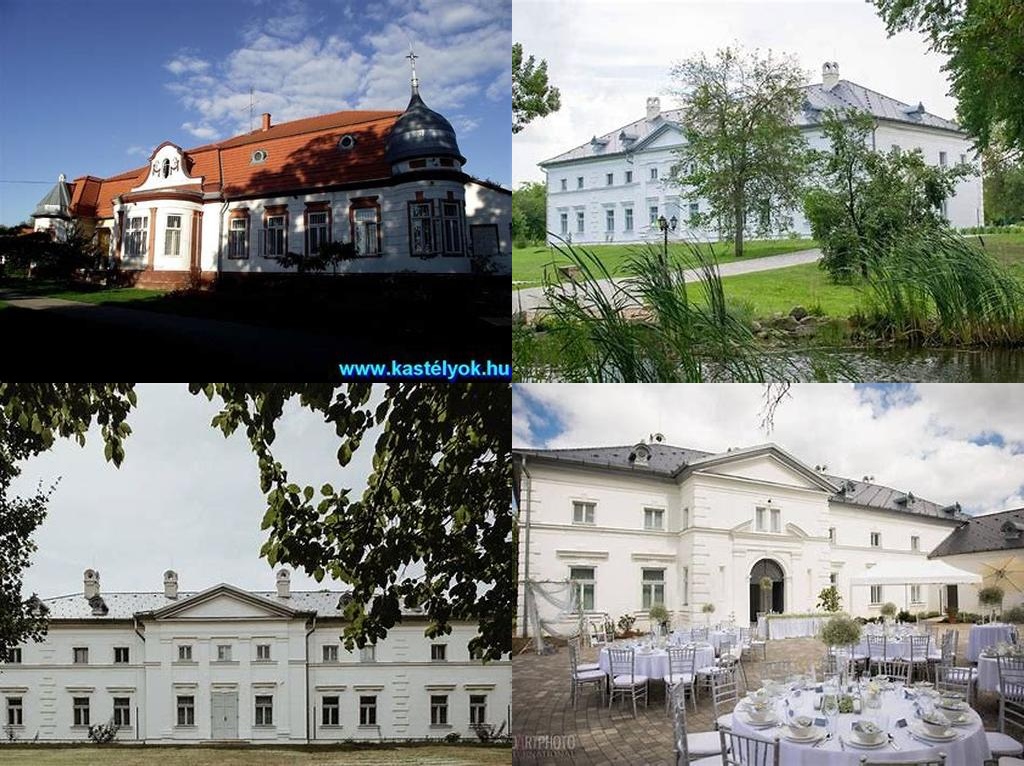
Hanzely-kastély in the quiet town of Bölcske might not make the front page of international travel magazines, but that’s precisely why it feels like stumbling on a hidden gem along the banks of the Danube. This evocative 19th-century mansion stands as a proud marker of the region’s layered history, where old-world elegance brushes shoulders with the soft, undulating landscape of Tolna County. History isn’t sealed behind ropes here; you can be part of the living tapestry, even if just for a little while.
The mansion’s story begins in the early 1800s, when the affluence brought by river trade and wine production allowed the wealthy Hanzely family to express their taste and aspirations in brick and mortar. Walking up the approach to the mansion today, you can’t help but imagine the grand arrivals of dignitaries and relatives—carriages crunching on gravel, fashions of the era flitting about the grand stairway. The original estate grew over several decades, its architecture nodding toward both classicism and rural Hungarian sensibility. Even as time wore away at the perimeters, the heart of the mansion—its generous, light-filled rooms and dignified facades—remained remarkably intact. If walls could talk, they might tell stories of 19th-century balls echoing with laughter, of quiet moments spent gazing across orchards to where the Danube glimmers in the sun.
At a time when so many stately homes are either cordoned off or converted into sterile museums, Hanzely-kastély stands apart as a place that breathes with character. There’s something about wandering its corridors and stepping into drawing rooms lined with polished wood that encourages you to lower your voice and pay attention—perhaps to the muffled footfall of your own shoes, or to subtle architectural flourishes that have survived wars, revolutions, and decades of changing tastes. You’ll spot ornamental stucco, expressive arches, and caryatid-like figures marking out grand thresholds, reminders of the skilled hands that built this home with care for both beauty and utility.
The gardens, too, are a story unto themselves. In spring, the estate comes alive with blooms: lilacs, roses, the heady scent of acacia. Ancient walnut and chestnut trees keep watch, just as they might have when the Hanzelys first strolled these paths. Locals often recall that for generations, entire families gathered at the estate for harvest festivals, open-air concerts, and even the odd theatrical performance. If you visit on a sunny afternoon, you might see the soft bounce of a football or hear laughter drifting from a community gathering beneath the trees. There’s a playful, welcoming spirit here, belying the common misconception that old mansions are solemn or subdued places.
Inside, explore as much as you like—the charm lies in the mix of authenticity and gentle renovation that’s kept the best bones of the building visible despite the passage of time. Each room hints at the routines and rituals that once shaped rural gentry life. There’s the library, lined with leather-bound tomes and the lingering scent of old paper; the formal dining room, set with delicate porcelain and crystal; and more private spaces that once hosted confidences and courtships. Occasionally, the estate hosts a small exhibition or temporary art show, adding a light contemporary touch without bulldozing over the mansion’s unique whisper of the past.
Bölcske itself is worth a lingering look, too. Unlike bigger Hungarian towns, Bölcske has kept its pace gentle, ideal for a slow ramble after your mansion tour. Humble wine cellars curve into the hillside, while narrow lanes meander to the Danube’s edge. Visit the church, sample local wines, chat with the people who know every curve and quirk of this riverside community. But no matter how long you wander, the silhouette of Hanzely-kastély draws you back—a quiet, steady presence on the horizon.
With a visit to Hanzely-kastély, you don’t just walk through a house—you slip into the rhythm of a place that connects people, generations, and the landscape itself. If you appreciate the faded grandeur of Central Europe, the gentle hum of history, and the feeling that some stories are best discovered in person, it’s strongly advisable to set aside a few hours to let the mansion weave its understated magic.





